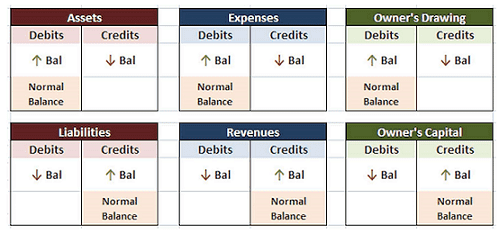
Understanding these differences is crucial for both parties to ensure fair and effective vacation pay practices. The timing of vacation pay disbursement can also influence its tax treatment. For instance, if vacation pay is issued as a lump accrued vacation meaning sum when an employee takes time off, it may be taxed at a different rate compared to regular pay periods. Some jurisdictions apply a supplemental tax rate to lump-sum payments, which can be higher than the standard withholding rate.
Related AccountingTools Courses
Based on a full-time 40-hour work week, an employee who receives 10 PTO days per year will accrue 1.54 hours of PTO per week of employment. Based on this calculation, it will take about five to six months to accrue a full week (five days) of available PTO. Since hourly employees don’t work fixed or standard hours, you may want to determine their accrual rate per hour worked, rather than providing them a fixed number of hours per year, as an example. Or, you may want to set your accrual rate to match what full-time employees receive, which will end up being less, as they work fewer hours. In the examples above, we used a weekly pay cycle and a standard five-day, 40-hour workweek. That accrual rate would be 1.54 hours of PTO earned (accrued) for each week worked.
How Does It Help Employers?

As a result, accrued vacation does not appear in precisely the same way on every balance sheet. Vacation can also appear as part of an “Operating Expenses” line item or under another term that references wages or daily operational costs. Some companies may just roll all compensation expenses into one large “Accounts Payable” line item that also includes supplier invoices, company credit card expenses and other costs. Navigating the tax implications of vacation pay can be complex, yet it is an important aspect for both employers and employees to understand. Vacation pay is generally considered taxable income, and as such, it is subject to federal, state, and local taxes.
- For example, an employee might earn one hour of vacation for every 40 hours worked.
- Based on a full-time 40-hour work week, an employee who receives 10 PTO days per year will accrue 1.54 hours of PTO per week of employment.
- Companies might implement a tiered accrual system, where the rate of vacation accrual increases with the length of employment.
- In Europe, for example, employees typically enjoy longer vacation periods compared to their counterparts in the United States.
- This discrepancy highlights differing national priorities, with the U.S. placing a greater emphasis on work productivity and individual responsibility for managing time off.
- Employers that are accumulating significant liabilities should begin to plan for employees to redeem their compensated absences in a way that will not adversely affect operations.
Can The Accrued Vacation Time Or Dollars Be Negative?
Entities do not necessarily account for vacation days in the same way as sick days; it is possible for a company to grant vesting rights for vacation days but not even accumulated rights for sick days. Sick days would be accrued if a company permits employees to bank these days and use them as compensated absences, i.e., they accumulate or vest. So accrued expenses are a payable account that is a liability on your balance sheet. The answer is prepaid expenses, and they’re actually more common than you think. If you use cash accounting, you won’t record accrued expenses because you’ll only record the expenses once the employee is paid in July.

Another method is the monthly accrual system, where employees earn a set amount of vacation time at the end of each month. This approach can be particularly useful for salaried employees who work consistent hours each month. For example, an employee might earn one day of vacation for every month worked, resulting in 12 days of vacation per year.
- This is the simplest method of payment, and it is most notable for seasonal work, part-time, or casual workers.
- Accrued vacation pay is the amount of vacation pay that a company’s employees have earned, but the company has not yet paid.
- A paid time off calculator is simply to help you determine the accrual rate and amount of PTO for your employees.
- If an employee does not use accrued vacation time by the end of his or her employment, the remaining unused amount is paid by the employer, based on the last hourly rate paid to the employee.
- For instance, in some jurisdictions, employees might accrue vacation pay at a rate of 4% of their gross earnings, which equates to two weeks of paid vacation per year.

Reporting and disclosing compensated absences

Verifying the Vacation Reconciliation Calculations
- However, the success of such policies often hinges on a strong organizational culture and clear guidelines to prevent abuse and ensure that work responsibilities are met.
- For the past 52 years, Harold Averkamp (CPA, MBA) has worked as an accounting supervisor, manager, consultant, university instructor, and innovator in teaching accounting online.
- When employees have accrued vacation time, you must create a vacation accrual journal entry.
- Let’s also assume that the company has only one full-time employee who began working at the company on January 1 of the current year and has an hourly pay rate of $26.
- On the other hand, in countries like Japan, employees may be entitled to vacation days but often feel cultural pressure to not take them.
- This is because, if the employee were to leave the company and be paid all of his unused vacation pay, he would be paid at his most recent pay rate.
